Bordeaux
Top Tourist Attractions in Bordeaux & Easy Day Trips
With its urban elegance and provincial charm, Bordeaux is an appealing tourist destination in a beautiful region of Southwest France. Bordeaux is called the "Port of the Moon" because of its romantic location on a crescent-shaped bend of the Garonne River. In this splendid setting that allowed trade to flourish, the city has a rich cultural heritage dating back to antiquity. UNESCO declared Bordeaux a World Heritage Site in 1998 thanks to the city's wealth of architectural treasures. More than 350 buildings are classified as historical monuments.
1 Cathédrale Saint-André
A place of historical importance in the heart of Bordeaux, the Cathedral of Saint Andrew dates back to the 12th century. Declared a UNESCO World Heritage Site, this cathedral was part of the Route of Saint James pilgrimage trail. Pilgrims traveled through Bordeaux from the Médoc, Tours, and the British Isles on their way to Santiago de Compostela in Spain. Comparable to Notre-Dame in Paris in its grandeur, the Cathedral of Saint Andrew has an impressive facade with sculptures of the Last Supper, the Ascension, and Christ in Majesty. Interestingly, the western front side of the cathedral is completely unadorned, since it was originally too close to the old town walls. However, now opposite the cathedral stands the Hôtel de Ville (Town Hall), a marvelous palace built in the 1770s. Designed in the Neoclassical style typical of Bordeaux, the Hôtel de Ville is an architectural treasure with an impressive colonnaded facade.
During the summertime, the Bordeaux International Organ Festival is held at the cathedral. Attending an organ concert in the cathedral's heavenly setting is among the most enjoyable things to do in Bordeaux. Some of Europe's most talented organists perform at the festival.
2 Le Grand Théâtre
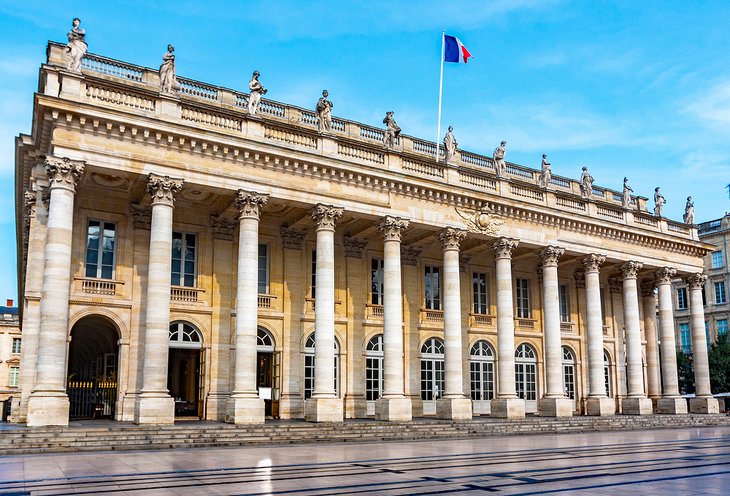
The Grand Théâtre is the centerpiece of the Place de la Comédie, a hub of city life and the ancient site of the Roman Forum. One of the city's most emblematic buildings, this monumental theater was built in 1780 in the inspiring new Classical style of Bordeaux. The building was designed by architect Victor Louis who also designed the Palais Royal and Théâtre Français in Paris. The exterior features 12 colossal Corinthian columns along with statues representing the nine muses and the goddesses Juno, Venus, and Minerva. Inside the theater, visitors are awed by splendid foyers and grand staircases. For a memorable experience, spend an evening at the theater to enjoy a performance by the National Orchestra or National Ballet of Bordeaux.
3 Place de la Bourse
Lining the quays of Bordeaux for a half mile are palatial classical buildings from the 18th century. The most magnificent examples are found at the Place de la Bourse, which epitomizes the elegance of 18th-century design. In the center of the square is the Fountain of the Three Graces, surrounded by two beautiful pavilion-like buildings: the Palais de la Bourse (formerly the Stock Exchange) and the Musée National des Douanes (Customs Museum), the only museum of its kind in France. These graceful quayside monuments overlook the banks of the Garonne River. Take a scenic walk alongside the Garonne River to admire the glorious architecture of the Place de la Bourse and the shimmering reflections of the buildings in the river.
Opposite the Place de la Bourse, between the Quai de la Douane and Quai Louis XVIII, the Miroir d'Eau (Water Mirror) is an outdoor artistic installation created in 2006. The result of a collaboration between fountain maker Jean-Max Llorca and landscape architect Michel Corajoud, the Miroir d'Eau could be called an "elegant puddle" or a "masterpiece of creativity," depending on your point of view. The two-centimeter pools of water beautifully reflect the surrounding 18th-century building facades. To create a mystical and ever-changing quality, the fountain system alternates between mirror and mist effects. The reflection changes with the time of day and the weather.
4 Basilique Saint-Seurin
This exquisite basilica is a designated UNESCO World Heritage Site because it was a stop on the medieval Way of Saint James pilgrimage. The basilica features the Romanesque style typical of churches on the route to Santiago de Compostela. This exceptional church dates back to the 11th century. The choir, featuring a stone abbot's throne and ornate stalls, was built during the 14th and 15th centuries. The choir chapel is adorned with impressive Gothic reredos (decorative screens) that display 12 alabaster reliefs and a 14th-century Virgin Mary figure. The oldest part of the basilica is the 11th-century crypt, which is a treasure trove of ancient reliquaries and sarcophagi from the 6th and 7th centuries.
5 Basilique Saint-Michel
Exemplifying an extravagant "Rayonnant Gothic" style, this basilica, dedicated to the Archangel, is another important church on the Route of Santiago pilgrimage trail. Along with the Cathedral of Saint Andrew and the Basilica of Saint Seurin, the Basilica of Saint Michael is a designated UNESCO World Heritage Site. The basilica took 200 years to build, from the 14th to 16th centuries. The church presents a pleasing unity of architectural style, described as "Rayonnant Gothic" (the 13th-century French style of ornate Gothic architecture). From the top of the freestanding belfry, you can take in stunning panoramic views of the city. After visiting the basilica, enjoy a stroll around the Quartier Saint-Michel that surrounds the basilica. This quarter to the south of the Pont de Pierre is the most colorful and atmospheric neighborhood of Bordeaux.
The square in front of the Saint-Michel Basilica is the location of a weekly fruit and vegetable market as well as a venue for Les Puces de Saint-Michel, a popular flea market that takes place every few months.
6 Musée des Beaux-Arts
Set in the pleasant Jardin de la Mairie public park, the Museum of Beaux-Arts occupies part of the Hôtel de Ville (Town Hall). The museum offers a wonderful insight into European art history, with a collection of art spanning the 15th to the 20th centuries. The permanent collection includes masterpieces by Titian, Veronese, Rubens, Delacroix, Renoir, and Rodin, among others. Paintings are organized thematically, grouped by era and country, such as the Renaissance, 17th-century Dutch paintings, and 17th to 18th-century French paintings. The adjoining Galerie des Beaux-Arts features temporary exhibitions of contemporary art.
7 Musée d'Aquitaine
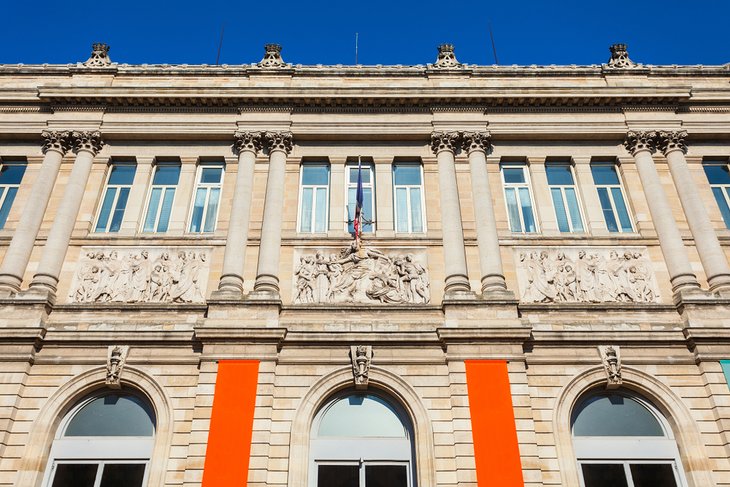
The Museum of Aquitaine vividly illustrates the history of Bordeaux and the region of Aquitaine from prehistoric times to the present day. The museum has exceptional pieces of antiquity, including the Laussel Venus, an artifact from 25,000 BC, Gallic gold coins from around the 2nd century BC, and a 3rd-century statue of Hercules. Other highlights include the 13th-century figure of a knight of Curton and the 16th-century Montaigne's tomb. The monument to Montaigne once stood at the entrance of the museum, and visitors would touch the statue's foot as a ritual to "absorb" the wisdom of the illustrious man.
8 Esplanade des Quinconces
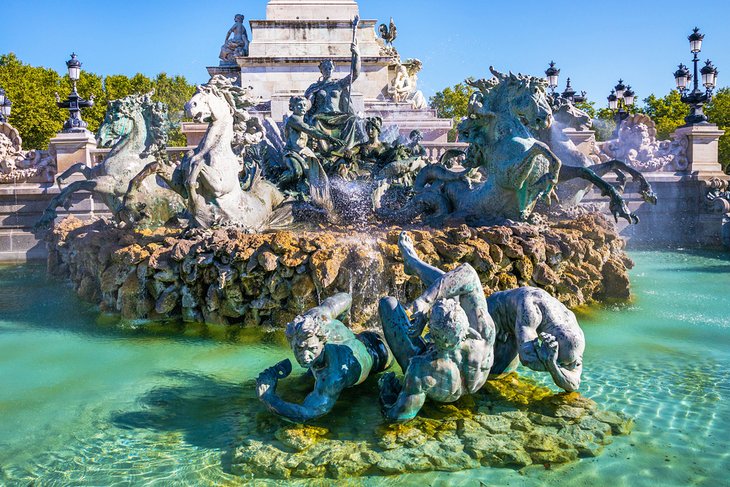
An expansive public space in central Bordeaux, the Esplanade des Quinconces is considered to be the largest square in Europe. This tranquil retreat in the heart of the city is just a few blocks away from Le Grand Théâtre. Flanked by the Quai Louis XVIII alongside the river, the esplanade offers peaceful waterfront views. Built from 1818 to 1828, the square's monumental fountain honors the Girondins, the group of republican politicians from the département of the Gironde who were deputies in the Legislative Assembly during the French Revolution. (Many Girondins were sent to the guillotine during the Terror). The original fountain was destroyed during World War II and later restored. There are also statues of Montesquieu and Montaigne. Another noteworthy attraction nearby is the Jardin Public, where you can visit the botanical gardens and the natural history museum.
Just south of the Place des Quinconces is the Rue Sainte-Catherine, the busiest shopping street in the city. This street is also the oldest existing thoroughfare in Bordeaux, as it was a road during Roman times.
9 Palais Gallien
The only remaining vestige of the Roman era in Bordeaux, the Palais Gallien was built in the late 2nd century and was located just outside the town of "Burdigala." This immense amphitheater could accommodate 15,000 spectators on wooden benches. Visiting this exceptional site allows you to envision life during Roman times. The amphitheater offered typical brutal Roman entertainment such as gladiator combats.
10 Tour Pey Berland
This richly decorated tower is the freestanding belfry for the Cathédrale Saint-André. Built in the 15th century for the Archbishop Pey Berland, the tower exemplifies flamboyant Gothic architecture with its ornate details, soaring spires, and angled corner buttresses. As a more recent addition, a 19th-century statue of Notre Dame d'Aquitaine adorns the top of the tower. Visitors can climb to the top to enjoy magnificent panoramic views of the city. There are also regular concerts held at the Place Pey-Berland that are free and open to the public.
11 Pont de Pierre
One of the iconic sights in Bordeaux, the Pont de Pierre (Stone Bridge) blends perfectly with the city's elegant riverfront buildings. Imagined in 1817 by engineer Claude Descamps, the Pont de Pierre was completed in 1821 after years of construction work. The result is a beautiful feat of engineering. The bridge spans the Garonne River with 17 graceful arches supported by foundation piles that are set into the riverbed and well designed to withstand strong currents. In the history of Bordeaux, this was the first bridge to cross the Garonne River.
12 Croiseur Colbert
The Cruiser Colbert was once one of France's biggest warships. Built in 1953, the ship served until 1990 during the Gulf War. Visitors can tour 75 rooms including the kitchen, engine room, Captain's footbridge, and the Admiral's flat for a peek into life on board for the 600 sailors.
13 Grosse Cloche

One of the remnants of medieval Bordeaux, the Grosse Cloche (Big Clock) is a monument built in the 13th and 15th centuries. The clock features predominantly in the gate tower that was part of the old city hall. This vestige of the Middle Ages in the historic city center has been restored to its former glory and adds to the ambiance of another era.
(thanks to: www.planetware.com)
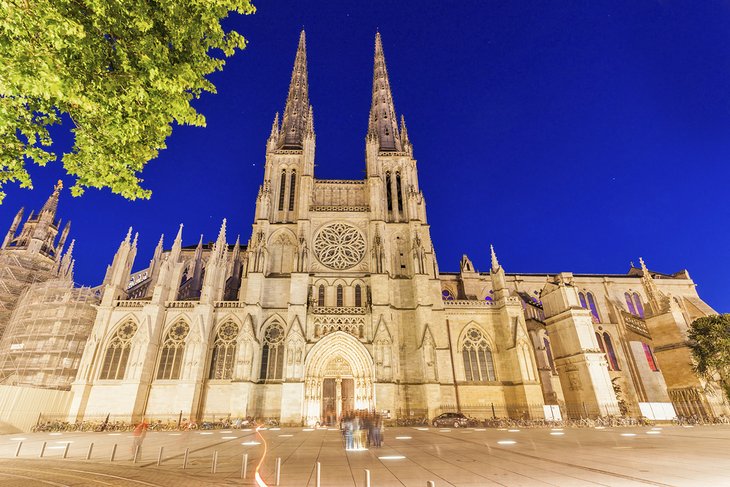
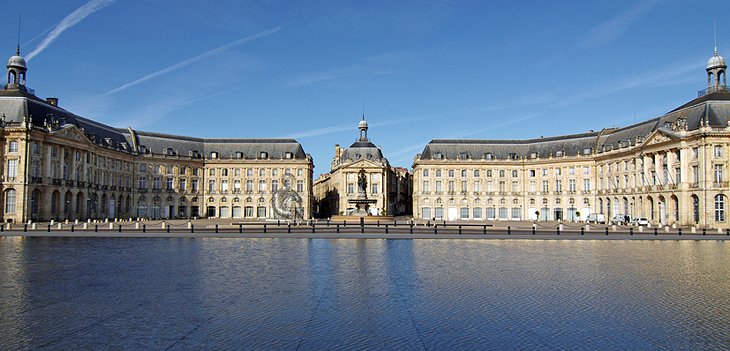
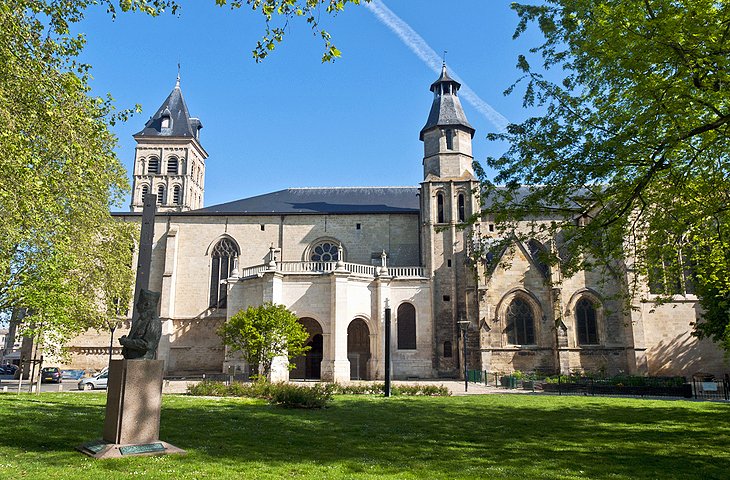
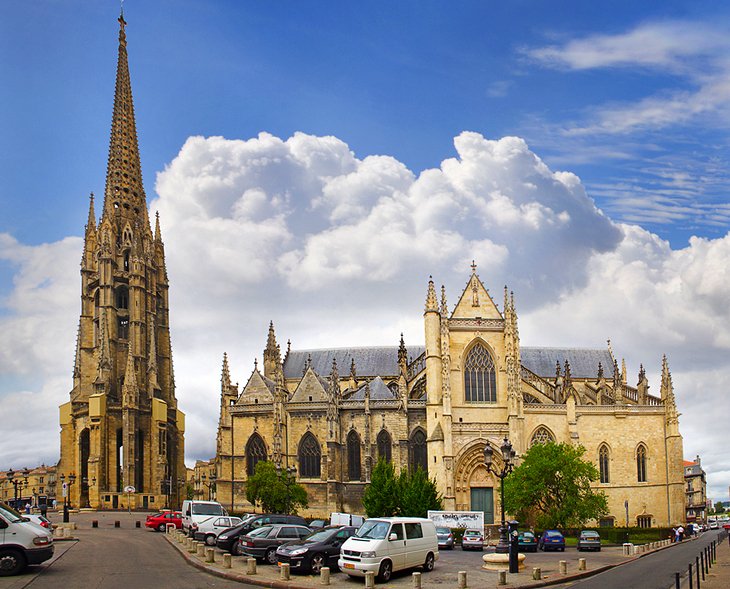
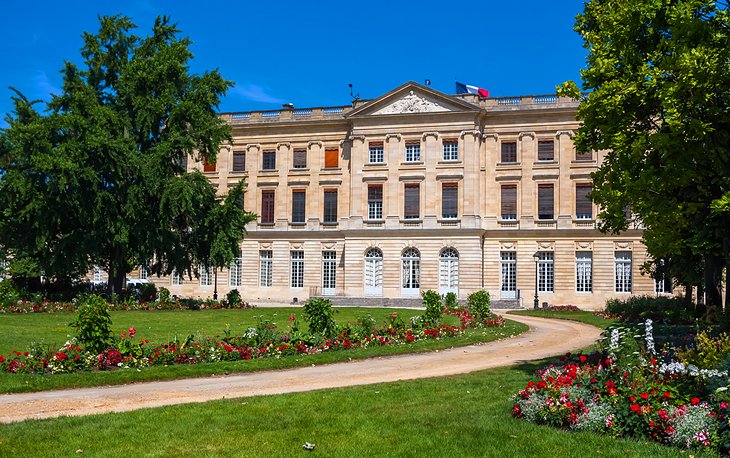
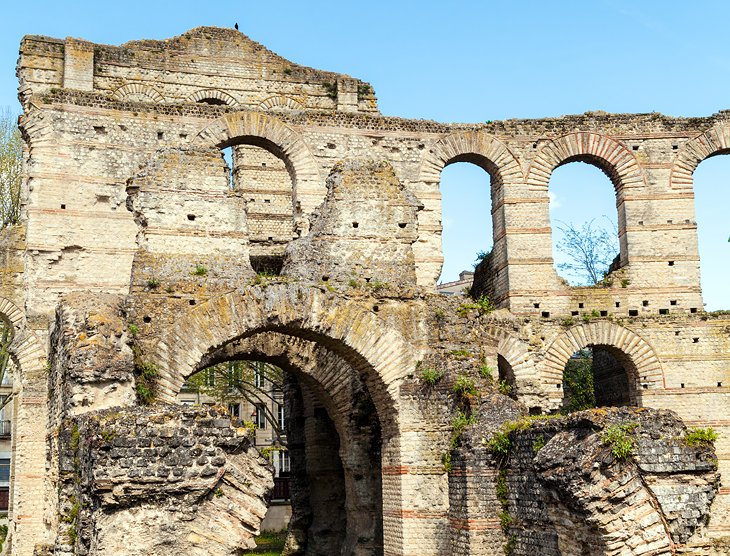
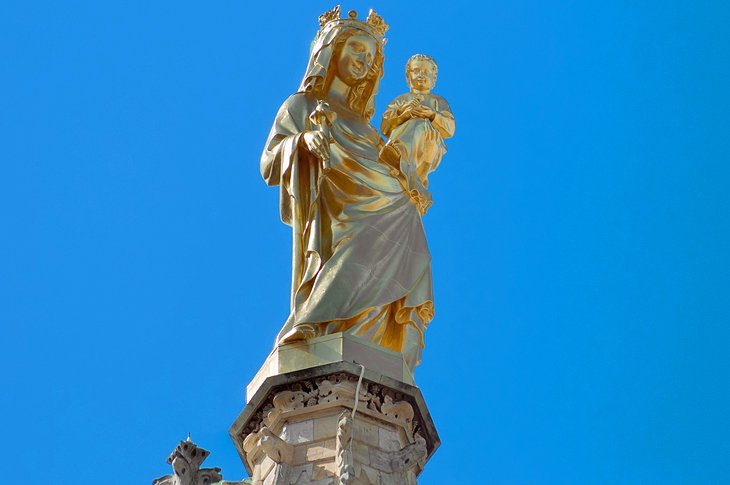
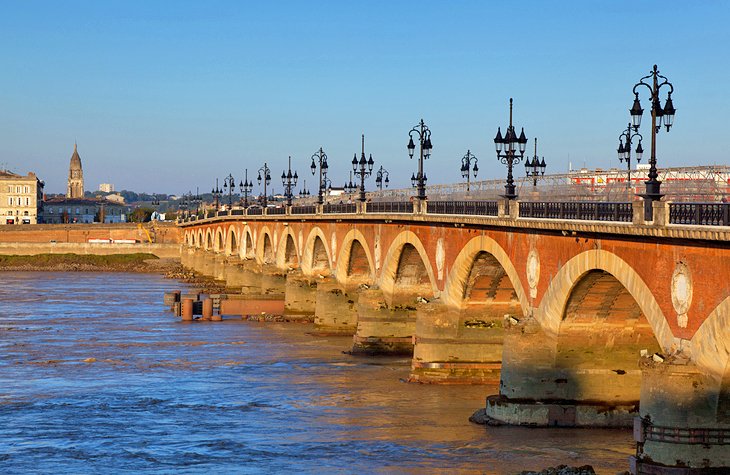
Comments
Post a Comment